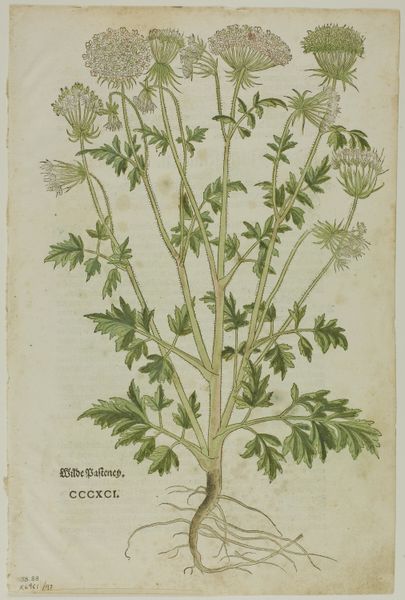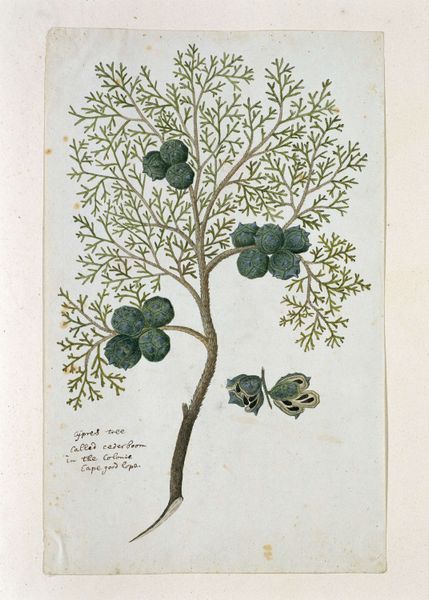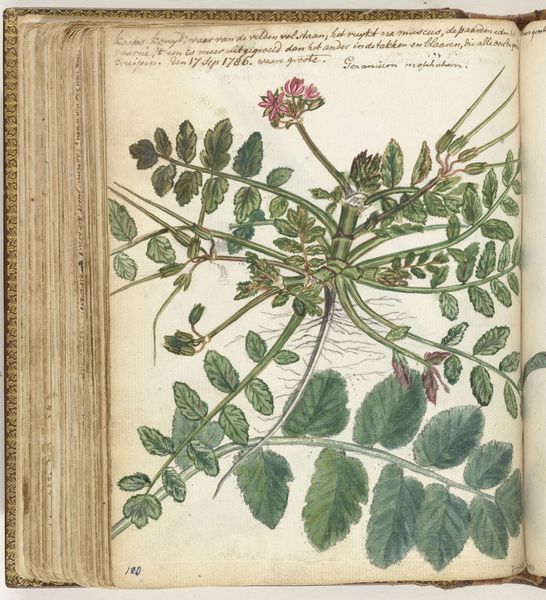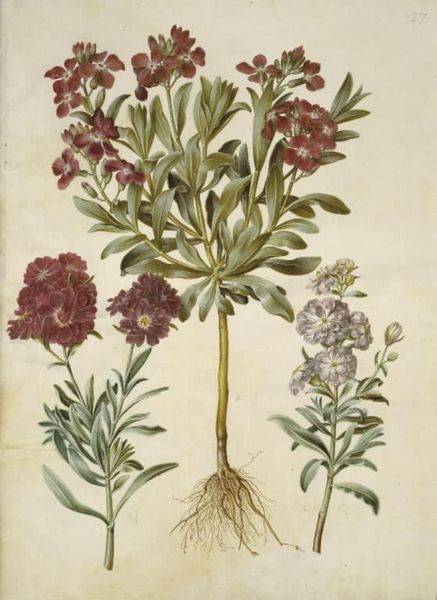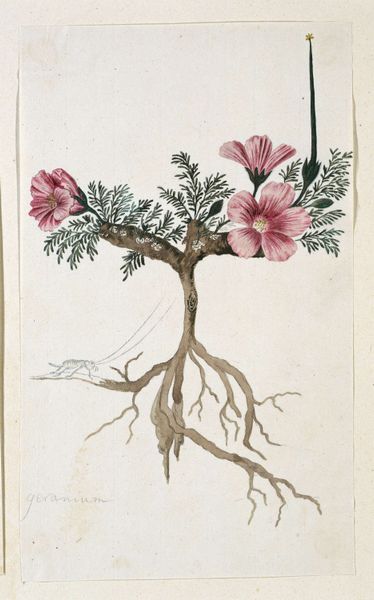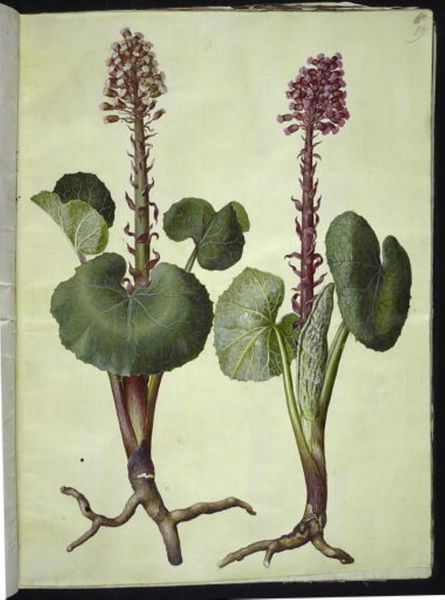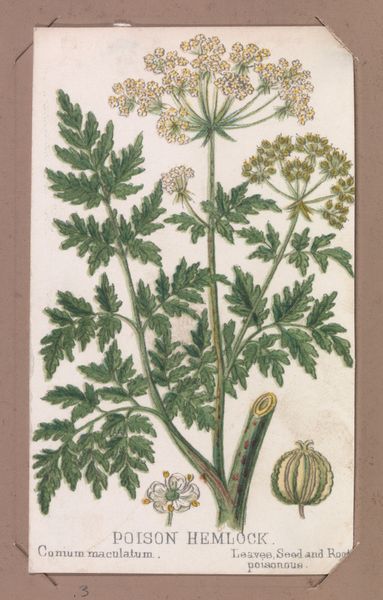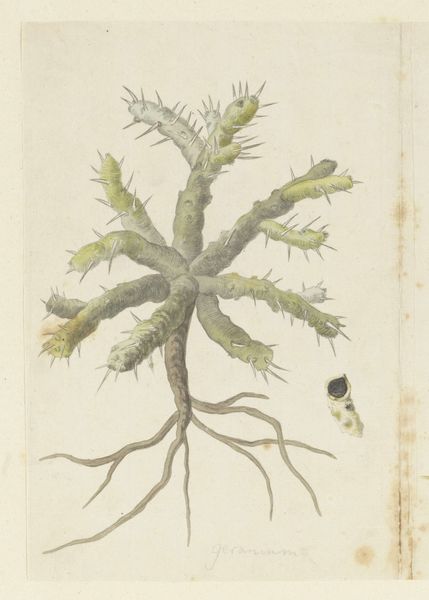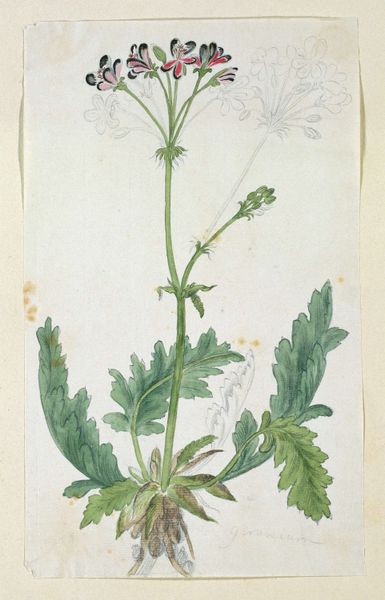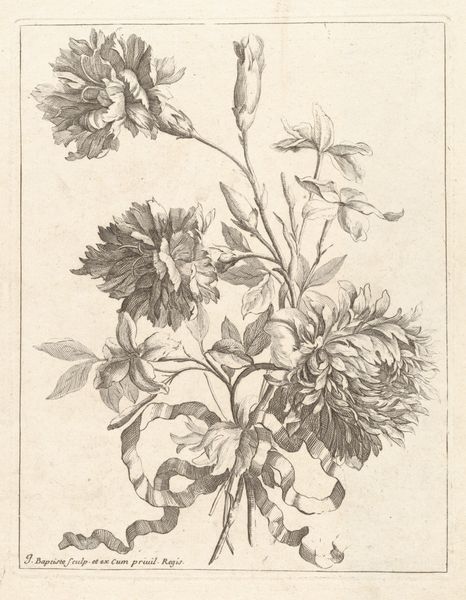
#
abstract painting
#
water colours
#
possibly oil pastel
#
handmade artwork painting
#
oil painting
#
fluid art
#
acrylic on canvas
#
watercolour bleed
#
watercolour illustration
#
watercolor
Dimensions: height 660 mm, width 480 mm, height 288 mm, width 186 mm, height mm, width mm
Copyright: Rijks Museum: Open Domain
Editor: So, here we have Robert Jacob Gordon's "Pelargonium klinghardtense Knuth," possibly created between 1777 and 1786. It looks like watercolor on paper, and I’m struck by how scientific yet artistic it is. What do you see in this piece, in terms of its historical context? Curator: Well, beyond the botanical accuracy, consider Gordon’s role as a commander of the Dutch East India Company garrison. Botanical illustrations like these served colonial interests. How might this seemingly objective rendering reflect broader socio-political motivations? Editor: You mean, like, the Company documenting resources, possibly for exploitation? Curator: Precisely. And think about the power dynamics at play: a European officer documenting an indigenous plant, asserting a form of visual ownership. Did Gordon, a military figure, portray this plant neutrally, or did his social standing and role influence the image? Consider the impact of presenting flora from a "new" world to a European audience. Editor: I never thought of it that way; I just saw a pretty picture. But it is about knowledge and power, right? What the West chooses to show and study becomes important. Curator: Absolutely. It's about whose knowledge counts and who gets to define it. It pushes us to question seemingly objective depictions. This plant is observed through a very specific lens. And that has wider implications. Editor: I see, looking at it that way really opens up a lot of avenues for exploration. Thanks! Curator: Indeed. These objects exist not in a vacuum, but are produced by distinct figures in historical context with implications in representation. Thanks for asking me these fascinating questions!
Comments
No comments
Be the first to comment and join the conversation on the ultimate creative platform.
